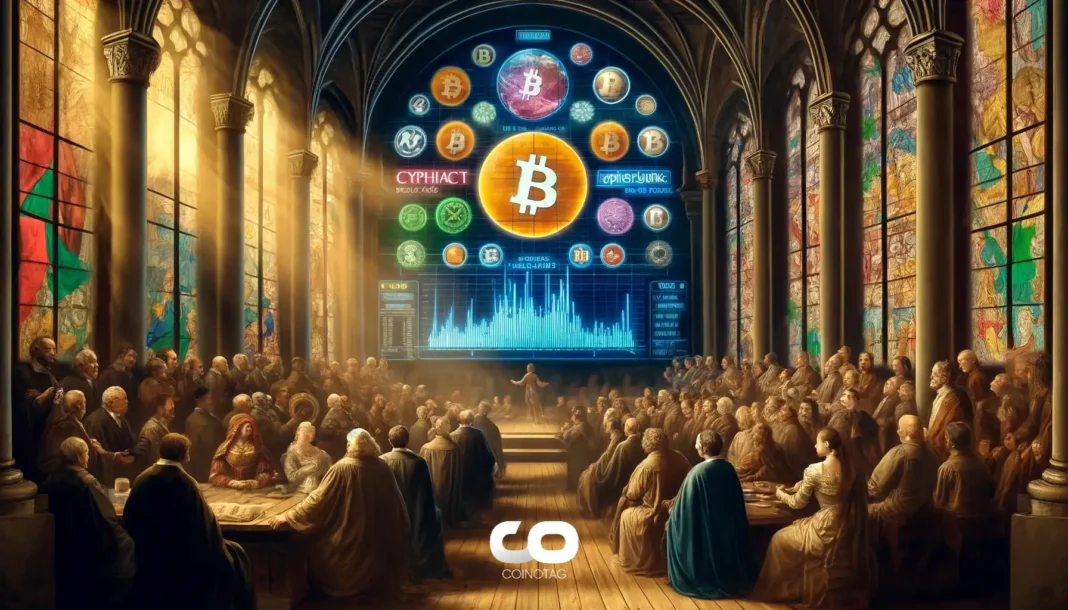-
Ethereum faces significant challenges as long-time investors move to liquidate their Ether holdings, signaling concerns over the network’s stability.
-
With its core metrics approaching multi-year lows, Ethereum is under scrutiny as Vitalik Buterin suggests a major overhaul to its architectural framework.
-
According to blockchain analysts, institutions like Galaxy Digital and Paradigm have significantly reduced their ETH exposure, highlighting shifts in market confidence.
Ethereum’s base layer struggles as institutions cut Ether holdings. Explore the potential implications and market dynamics shaping this landscape.
Ethereum Faces Institutional Exodus Amid Market Turbulence
Recently, Ethereum has witnessed a notable shift, with institutions pulling back from their investments. Once considered a haven, the Ethereum network now sees key players such as Galaxy Digital liquidating substantial portions of their Ether assets in favor of alternatives like Solana (SOL).
Blockchain data indicates that Galaxy Digital recently transferred 65,600 ETH (valued at $105.5 million) to Binance for potential selling. The firm’s previous holdings peaked at approximately 98,000 ETH but declined to around 68,000 ETH, as reported by Arkham. This exodus is placing Ethereum’s future into question, even as its network experiences diminishing activity and declining fee revenues.
Investment Trends: A Deeper Look at Institutional Withdrawals
Despite the current downturn, some institutional investors have not entirely abandoned their positions in Ether. They continue to monitor the market closely, showing an ongoing interest in potential rebounds. Comparatively, investment products linked to Ethereum have seen outflows of around $772 million over the past eight weeks, though the year-to-date flows still reflect a net positive of $215 million.
Paradigm, another key player, also reported reductions in Ether holdings, moving 5,500 ETH (approximately $8.66 million) to a different custodian, bringing their total down to merely 2,873 ETH from about 236,000 ETH in 2019. This trend underscores the evolving sentiment about Ethereum’s profitability, as articulated by industry experts.
Inflationary Pressures Challenge Ether’s Deflationary Narrative
Once lauded for its deflationary mechanics post-Merge, Ethereum is now experiencing inflationary trends. New issuance of Ether has eclipsed levels set post-Merge, driven by a decrease in transaction fees, thereby limiting the ETH burned from transaction costs. Data from IntoTheBlock reflects a stark drop in fees to levels not seen since July 2017, raising doubts about Ethereum’s ability to maintain its position within the crypto market.
Buterin Proposes Radical Changes Amid Network Struggles
In light of the ongoing challenges, co-founder Vitalik Buterin has introduced the RISC-V instruction set proposal—aimed at substituting the current Ethereum Virtual Machine (EVM). This proposal suggests deeper flaws within Ethereum’s existing architecture and a need for a robust overhaul to improve execution speed and overall network efficiency.
As the Ethereum Foundation grapples with direction amid rising dissatisfaction, Buterin’s proposal signifies a pivotal moment of introspection within the community. The acknowledgment of structural limitations could pave the way for transformative changes, signaling a crucial turning point for Ethereum’s architectural legacy.
The Shift Towards Layer-1 Solutions
As the Ethereum ecosystem evolves, the increased focus on layer-1 scaling underscores a strategic pivot from the previously adopted rollup-centric strategy. This approach was intended to alleviate congestion on the base layer; however, it inadvertently led to fluctuations in Ether burns and further fragmentation within the ecosystem.
In a recent statement, Tomasz Stańczak, co-executive director of the Ethereum Foundation, indicated a renewed commitment towards enhancing layer-1 solutions, moving away from dependency on layer-2 rollups. This could restore some measure of efficiency to Ethereum’s original network while enhancing user experience and reducing transaction costs.
Conclusion
As the situation unfolds, Ethereum stands at a crossroads. The dual challenges of institutional sell-offs and inflationary pressures highlight the urgency for systemic improvements. Investors should remain vigilant as the network attempts to reorganize and implement innovative solutions to restore confidence and create a more sustainable environment for growth. Despite the current volatility, some market participants see opportunities, cautiously positioning themselves for Ethereum’s potential recovery and future growth.







